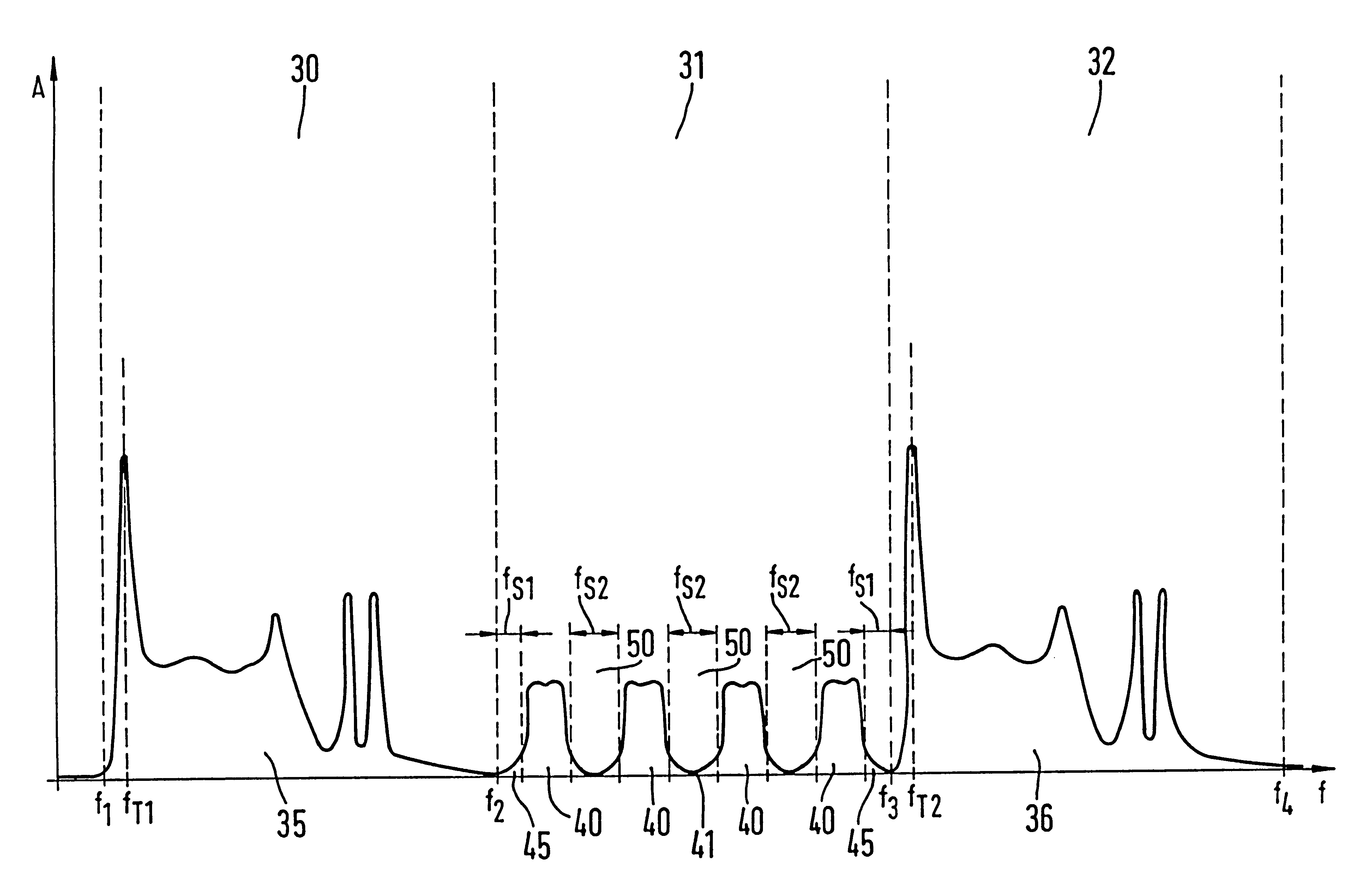Method for the terrestrially transmitting digital signals
a digital signal and terrestrial transmission technology, applied in the field of terrestrial transmission digital signals, can solve the problems of not all of the terrestrially possible tv channels can be occupied, the selectivity and linearity of the receiver input stage cannot be guaranteed, and the receiver input stage cannot be selected and linear
- Summary
- Abstract
- Description
- Claims
- Application Information
AI Technical Summary
Benefits of technology
Problems solved by technology
Method used
Image
Examples
Embodiment Construction
In FIG. 1, reference numeral 10 indicates a multiplexer, to which one digital TV broadcasting signal each is supplied via a first, second and third encoder 1, 2, and 3, and to which one digital radio signal each is supplied via a fourth through ninth encoder 4-9. The multiplexer 10 is connected via modulator 15 and an amplifier 20 to a transmitting antenna for terrestrial broadcasting of the digital radio and TV broadcasting signals.
The encoders 1-9 reduce the data quantity of the digital TV broadcasting signals and digital radio signals, thus limiting the frequency spectra of the digital signals. For reducing the data quantity, data compression algorithms are suitable, such as MPEG 1, MPEG 2, or MPEG 4 (MPEG=motion picture expert group). For audio data reduction, the ISO MPEG 11172 standard, with its various layers, is suitable. The digital signals supplied to the multiplexer 10 via the encoders 1-9 are combined in the multiplexer 10 by frequency multiplexing into a digital signal ...
PUM
 Login to View More
Login to View More Abstract
Description
Claims
Application Information
 Login to View More
Login to View More - R&D
- Intellectual Property
- Life Sciences
- Materials
- Tech Scout
- Unparalleled Data Quality
- Higher Quality Content
- 60% Fewer Hallucinations
Browse by: Latest US Patents, China's latest patents, Technical Efficacy Thesaurus, Application Domain, Technology Topic, Popular Technical Reports.
© 2025 PatSnap. All rights reserved.Legal|Privacy policy|Modern Slavery Act Transparency Statement|Sitemap|About US| Contact US: help@patsnap.com



